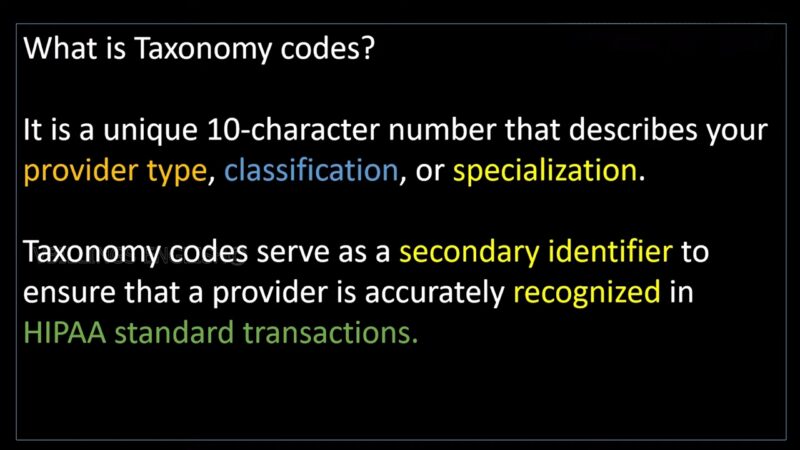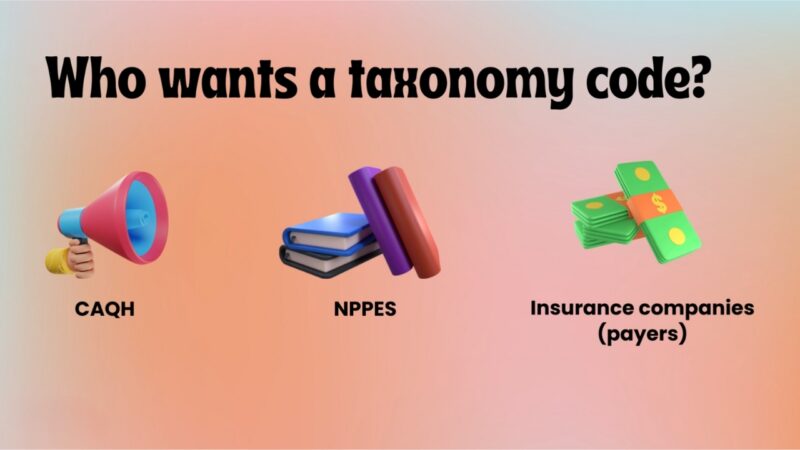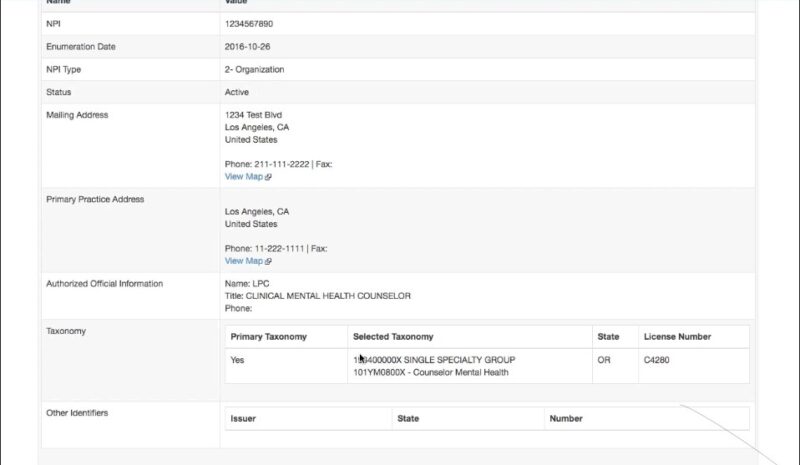Taxonomy Code. What does it even mean? Well first, let’s get a grasp on the basics.
In its essence, the science of classification. It’s how we categorize things, whether it’s plants, animals, or even codes in various industries. It’s like putting labels on boxes to know what’s inside without opening them.
Taxonomy codes play a pivotal role in many sectors, but especially in healthcare and business. They ensure that data is organized, making it easier for professionals to retrieve and use it. Think of it as a universal language that everyone in the industry understands.
So What Is a Taxonomy Code?

A unique identifier, usually a combination of numbers and letters, is used to classify and categorize professionals, services, or products within a specific industry.
The primary purpose of these codes is to standardize classification across the board. For instance, in healthcare, it helps in identifying the specialty of a provider. In business, it might categorize a specific type of service or product.
Their Structure
Each taxonomy code is structured in a way that provides specific information about the category it represents. For instance, the first few digits might indicate the broader category, while the subsequent ones could specify the sub-category or specialty.
| Component | Represents | Example |
| First few digits | Broader category | Healthcare vs Business |
| Subsequent digits | Specific sub-categories or specialty | General practitioner vs Neurologist |
The digits in a taxonomy code aren’t random. They follow a specific pattern and sequence, making it easier for professionals to decode them.
Different Types
Taxonomy codes aren’t a one-size-fits-all. Depending on the industry, their structure and purpose can vary. Let’s explore a couple of them.
Healthcare
In healthcare, taxonomy codes help in distinguishing between different medical specialties, from general practitioners to neurologists.
For healthcare providers, these codes simplify many processes. They assist in billing, ensuring that claims are accurate. Moreover, they help in data management, making patient record retrieval more efficient.
Business
In the business world, they classify services, products, or even sectors. For instance, a specific code might be used for a retail business, while another might be for manufacturing.
Imagine a large conglomerate with various sectors, from food production to digital services. Taxonomy codes help in categorizing each sector, making data management and analysis more streamlined.
| Aspect | Healthcare | Business |
| Primary Use | Classifying medical specialties | Categorizing business sectors |
| Number of Codes | Over 800 | Varies by industry |
| Key Benefit | Simplifies billing and data management | Streamlines data analysis and management |
How They Are Assigned
Healthcare
In the healthcare sector, the National Provider Identifier (NPI) plays a significant role. Every healthcare provider in the U.S. must have an NPI, which is a unique 10-digit identification number. Along with this, providers also have taxonomy codes that specify their specialty.
Several regulatory agencies oversee their assignment in healthcare. The most notable is the Centers for Medicare & Medicaid Services (CMS). They ensure that the codes are up-to-date and relevant to the ever-evolving medical field.
In Business

In the business realm, they are often determined by industry standards and associations. These organizations recognize the need for a standardized system to categorize various sectors, products, or services.
Businesses must adhere to specific compliance requirements when using taxonomy codes. This ensures that there’s uniformity across the board, making data analysis and other processes more efficient.
How They Help
Improved Data Management
With the help of taxonomy codes, record-keeping becomes a breeze. Whether it’s patient records in healthcare or product inventories in business, these codes ensure that data is organized and easily accessible.
Ever tried finding a needle in a haystack? Without them, retrieving specific data can feel just like that. But with them, you can pinpoint the exact information you need in no time.
Billing and Reimbursement
In healthcare, accurate billing is paramount. Taxonomy codes help in ensuring that claims reflect the services provided.
For businesses, they can streamline financial transactions. Whether it’s invoicing clients or managing internal finances, these codes make the process more systematic and efficient.
Common Misconceptions

Every system has its myths, and taxonomy codes are no exception. Let’s set the record straight.
One common myth is that taxonomy codes are universal across all industries. While they serve a similar purpose of classification, their structure and assignment can vary significantly from one sector to another.
Another misunderstanding is that they are static and never change. In reality, as industries evolve, so do taxonomy codes. They’re periodically reviewed and updated to remain relevant.
How to Find Your Taxonomy Code

This might seem like a daunting task, but with the right resources, it’s a walk in the park.
Healthcare Providers
For those in the healthcare sector, several online databases and directories list taxonomy codes based on specialties. The National Plan and Provider Enumeration System (NPPES) is a reliable place to start.
The NPI Registry is another invaluable resource. By entering a provider’s NPI, you can retrieve their taxonomy code along with other relevant details.
Businesses
Businesses can refer to industry-specific databases or associations that maintain a list of taxonomy codes. These databases often categorize codes based on sectors, products, or services.
If you’re unsure about your business’s taxonomy code, consulting with industry experts or associations can provide clarity. They can guide you to the right resources or even provide the code based on your business’s specifics.
FAQ
How are taxonomy codes evaluated at the point of sale?
When an NPI (National Provider Identifier) is submitted on a claim, the adjudication logic searches for a valid taxonomy code. If a valid code is identified, the claim will continue to process.
However, if no valid taxonomy code is present, the claim will be rejected. It’s essential to note that there can be up to 15 unique taxonomy codes associated with any given NPI. The system evaluates all taxonomy fields to confirm their validity.
Why is the taxonomy code pertinent to Medicare enrollment?
Your taxonomy code informs various entities, including Express Scripts, other processors, and CMS (Centers for Medicare & Medicaid Services), about your eligibility for Medicare enrollment.
If your taxonomy indicates that you should be enrolled in Medicare and you haven’t enrolled or opted out, plan sponsors and their claims processors are instructed to deny the claim after a provisional fill has been provided to the beneficiary.
If I have the credentials to prescribe but don’t update my taxonomy code, will my claims be rejected?
Yes, if you lack a valid taxonomy code or if your taxonomy suggests you should enroll in Medicare, claims for prescriptions you write will ultimately be rejected. It’s crucial to ensure that your taxonomy code is updated and accurately reflects your credentials and status.
Where do taxonomy codes originate from?
All taxonomy codes associated with NPIs come from the National Uniform Claims Committee (NUCC). This voluntary organization helps develop standardized data sets for healthcare providers to send claim and encounter information to and from third-party payers. The committee was developed in collaboration with CMS and the American Medical Association.
Conclusion
Taxonomy codes, as we’ve seen, are more than just identifiers. They’re the backbone of data management in various industries, ensuring that information is organized, accessible, and relevant. From healthcare to business, they play a pivotal role in streamlining operations and enhancing efficiency.
Their beauty o lies in their universal application. While their structure and specifics might vary across industries, their core purpose remains the same: classification. And in today’s data-driven world, having a systematic classification method is invaluable.
